#Atharva-Veda
Text
10 facts about Saturn in Astrology
Sometimes you wonder why your life is so difficult when you seem to be doing everything properly. This is what the planet Saturn is supposed to do for you. It deals with discipline, challenges, delays, obligations, dealings, and occasionally denials.
It wants you to put in a lot of effort, work hard, and learn from your mistakes so that when you do experience success, it can still keep you grounded and modest despite your abundance of knowledge. As a result, Saturn is a stern instructor who is austere but just for the sake of the pupil.
In terms of astrology, Saturn is associated with discipline, karma, hardwork, patience, time management, and meeting deadlines while keeping the constraints in mind. Saturn, however, couldn't be categorised as a bad planet because of the way it can turn rags into gold.
But, it requires you to be brave even under the most trying circumstances. In Vedic astrology, Saturn is also associated with the aged, with the grace of old age, with traditions, with established ways of doing things, and with authority. It rewards you for tenacity and penalises you for impatience and shortcuts.
Saturn Astronomical Information
The Sun is the largest planet in the solar system, with Saturn coming in second. 1.35 billion kilometres separate this ringed planet from the sun (closest distance). It rotates once every 10 hours and 40 minutes and takes approximately 29.5 years to complete one revolution around the sun.
Saturn has 62 satellites, similar to how Earth has the Moon as its satellite. Moreover, it makes an annual appearance in retrograde for about 135 days.
Saturn travels through the zodiac in around 30 years and spends about 2.5 years in each sign.
Essential Details about Saturn Transit in each sign 2.5 years
Direction West
Metal Iron
Gem Blue Sapphire
Day Saturday
Color Blue
Temperament Strict, Sorrowful
Gender Male
Ruling Body Part Legs, nervous system, chronic diseases
Status in Imperial Stars Advisor
Friends Mercury, Venus
Enemies Sun, Moon, Mars
Neutral Jupiter
Own Sign Capricorn, Aquarius
Exalted in Libra
Debilitated in Aries
Mool Trikon Aquarius
Mahadasha Period 19 Years
Relation Servants and Elderly People
Professions Mining, labor, oil, petroleum, agriculture, freezing, coal, leather goods, butchery, lead, blue sapphire.
Significance of Saturn in Vedic astrology
As a result of our past life karma, Saturn places restrictions and pain on us. By doing this, it enables us to identify our flaws and shortcomings, make adjustments, and finally accept responsibility.
According to Vedic astrology, the region of life where a person may struggle is determined by where Saturn is positioned in the horoscope. Yet, the strength of the sign in the horoscope indicates whether the individual will be resilient enough to face challenges or prone to breakdowns.
Strong Saturns in the horoscope are typically hard workers who may labour nonstop to achieve their objectives. Also, these people have a stronger feeling of duty and loyalty. They take a structured approach to life, are rather sombre, and are rigorous by nature.
When Saturn is afflicted, it indicates that person's inability to handle problems in life. Such people's escapist inclinations make matters worse because Saturn wants you to work hard.
In rare situations, a weak Saturn in the horoscope can result in mental anguish, aloofness in personality, addictions, and even chronic illnesses. If you give up and succumb to shortcuts to avoid suffering, problems could get worse.
The greatest solution is to lead a disciplined lifestyle and put in a lot of effort, which will eventually lead to purification and the pursuit of one's true self. The consequences of a Saturn affliction last for a very long time because Saturn is a sluggish planet. Once the moment of tenacity and laboriousness is over, there there will be rewards both in spiritual as well as other sense.
Top 10 Saturn Facts
As well as being a beauty, the ringed wonder is also a fascinating world.
Saturn has 62 confirmed moons.
The planet is tilted on its axis by 26.7° and therefore has seasons. Each lasts just over seven years because Saturn takes 29.45 years to orbit the Sun.
Saturn is a gas giant planet; it is mainly made up of hydrogen and helium. It's thought that a rocky core exists at its centre.
On average, Saturn is 9.5 times farther from the Sun than Earth is.
Each day on Saturn is only 10.55 hours long. This means that there are 24,470 Saturnian days in one Saturnian year — that's a lot of sunrises and sunsets!
Saturn is slightly flattened: its equatorial diameter is 120,536km while its polar diameter is 108,728km. You could fit 9.5 Earths across its disc.
The ring system out to the A ring is 273,550km wide, but only 1km thick.
Saturn is a windy planet, with gusts measured by Voyager at 1,800km/h.
Titan, Saturn's largest moon, has a nitrogen atmosphere and liquid lakes of methane on its surface.
Roughly every 30 years, a great white storm appears in Saturn's northern hemisphere.
#astrology#vastu#vedic astrology#vastu shastra expert#vaastu#astro notes#aries astrology#astro placements#predictive astrology#astro posts#astro community#astro chart#vedas#vedanta#rigveda#yajurveda#rg veda#hindu vedas#atharva-veda#Vedic Jyotish Online#vedic astro observations#astrology numerology vedicastrology#astrology numerology vedicastrology#vedic chart#vedic astro notes#vedic#hindu mythology#hinduism#hindu astrology#hindu vedic
42 notes
·
View notes
Text
Le meto la mano a sexy colegiala nalgona
Happy Birthday sexually whit her dog
Lucy Doll In Super Small Step Sis Gets Destroyed
Astonishing gal gets juicy sissy fucked
Dads slamming their teens wet coochies making them scream in delight
indian cum so fast
AWESOME AMATEUR TEEN BLONDE TOYING PUSSY
Me chupo toda la verga al vecino mientras mi novio ve
Avy Scott Gets Nailed
La serveuse se fait baiser pendant sa pause [Full Video]
#Juturna#Sulligent#Coronus#Persianization#noyades#unrepetitively#well-pondered#adenographer#Atharva-Veda#strany#rush-margined#Wausa#clansman#meritorious#efform#ventilative#tysonite#dithioic#Childermas#clerestoried
1 note
·
View note
Text
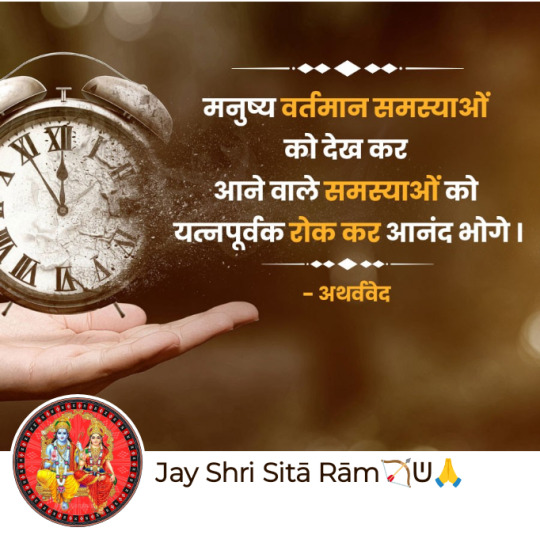
जय श्री सीताराम🏹ᕫ🙏अथर्ववेद📖...✍️
2 notes
·
View notes
Text
India’s Vedic Sanskrit Upanishads: Foundation of Religions and Karma! | Ancient Origins
https://www.ancient-origins.net/news-history-archaeology/upanishads-0016125
View On WordPress
#1st millennium BC#8th century AD#Aitareya#Ajivikas#Aranyaka#Aranyakas#Aruni#Atharva Veda#Atman#Bâlâki#Brahman#Brahmana#Brhadāranyaka#Buddhism#Buddhist#Chāndogya#Hanuman#Hinduism#India#Indian Subcontinent#Isa#Islam#Jainism#Kaivalya#Karma#Katha#Kauṣītakī#Kena#Maitrī#Monkey God
0 notes
Text
Rigveda | Sukta 1 & 2 | ऋग्वेद | सूक्त १ और २
youtube
1 note
·
View note
Text
Ayurveda - The Science of Life
Ayurveda is not just a mere medical practice, but a way of life. It forms the crux of the Indian wellness system and is renowned as the world's oldest medical science.
Ayurveda is not just a mere medical practice, but a way of life. It forms the crux of the Indian wellness system and is renowned as the world’s oldest medical science. Ayurveda originates from the Indian subcontinent and is created on the fundamental principle of living according to the rhythms of nature. Ayurveda is a treasure trove of holistic knowledge that has been passed on from one…

View On WordPress
#Atharva Veda#ayurveda#Holistic Haelth#Michelle Berry#Michelle Berry Bliss#Natural Living#Science of Life
0 notes
Text
#Atharvaveda #Atharva #veda #upanishad #upanishads #invocation #peace #chant #hinduismbook #munindramisra
ATHARVA VEDA: Upanishad Invocation & Peace Chant https://www.youtube.com/watch?v=jJIqhaspgH4
youtube
#hinduism#munindra#english#rhyme#sanatan#dharma#munindramisra#books#upanishad#hinduismbook#atharvaveda#veda#atharva#Youtube
0 notes
Note
Hey Meat! Currently combing through Matt Clayton’s Hindu Mythology: A Captivating Guide to Hindu Myths, Hindu Gods, and Hindu Goddesses and I was wondering if you could give like a little introduction to the main concepts/gods/goddesses? I’m seeing many terms like “the Veedas” and “the Shastras” as I go through it and I’m picking up context clues and I could probably google them but I’d like to hear from actual people and especially those who know and care deeply about these Myths (like you <3). So… can you help me? /gen
Heyyy Neptune! First of all I apologize it took me so long to answer you dfnsfjfdjg forgive meeee
I love how ardently you're researching Hinduism. I haven't really read his book, but I'll help you with giving you an overview of it, so to speak.
Firstly lemme tell you about the Vedic knowledge system, which consists of:
Vedas
Vedangas
Upavedas
Vedas: These are the oldest known scriptures of Hinduism. The religion has four Vedas, namely the:
Rig Veda (RV): book of hymns to the deities.
Yajur Veda (YV): book of mantras and worship rituals
Sama Veda (SV): book of chanting songs
Atharva Veda (AV): book of procedures of everyday life
Each of them have four subdivisions:
Samhitas (mantras, hymns, prayers and benedictions)
Brahmanas (explanations and instructions on performing Vedic rituals)
Aranyakas (texts on the meaning and symbolisms of rituals and ceremonies basically). They were mainly composed by sages who meditated in the wilderness, hence the name of the texts (aranya means forest in Sanskrit).
Upanishads (texts on meditation, philosophy and spiritual knowledge)
Upasanas (additional). These are texts on worship.
Vedangas: These are the six auxiliary disciplines of Hinduism, and are heavily linked to the Vedas. They are:
Shiksha: Study of phonetics
Vyakarana: Study of grammar
Chhandas: Study of poetic metres and rhythm
Niruktas: Study of etymology
Jyotishya: Study of astrology and astronomy
Kalpa: Study of rituals and guide to ritual instructions
Upavedas: These are texts regarding certain fields of work like:
Ayur Veda: Study of medicine and life sciences
Gandharva Veda: Study of music, art and dance
Dhanur Veda: Study of archery and warfare
Arthashastra: Study of business and administration
Speaking of Shastras, they are kinda similar to Upavedas, and deal with certain fields of knowledge, like we saw in the case of Arthashastra. There are many shastras:
Bhautikashastra - Study of physics
Rasashastra - Study of chemistry
Jivashastra - Study of biology
Vastushastra - Study of architectural science
Shilpashastra - Study of mechanical arts and sculpture
Nitishastra - Corpus on ethics and policies
Alamkarashastra - Study of rhetorics
Kavyashastra - Study of poetics
Sangitashastra - Study of music
Natyashastra - Study of theatre and dance
Yogashastra - contains instructions and teachings on yoga
Mokshashastra - contains instructions and teachings on moksha
Nyayashastra - contains instructions and teachings on justice, laws and judgement
Dharmashastra - contains instructions and teachings on dharma
Kamashastra - contains instructions and teachings on love, desire and pleasure.
And so on.
Then we have the Puranas, which are texts on various topics, usually legends and lores. A few examples are:
Brahma Purana
Vishnu Purana
Matsya Purana
Kalika Purana
Vamana Purana
Shiva Purana
Agni Purana
Bhagavata Purana
And so on. The latest Purana ever written was the Kalki Purana, which was around 400-600 years ago. It is believed that Ved Vyasa (the author* of the epic Mahabharata) composed all these Puranas as well. But many disagree.
*some believe Ved Vyas got Ganesh (the God of wisdom, success and remover of obstacles, and the son of Shiva) to write the Mahabharata for him. While some believe Ved Vyas wrote it himself.
Then we have the Sutras which are aphoristic (concise expression of a general truth/principle) texts. Some examples are:
Brahma Sutras
Yoga Sutras
Nyaya Sutras
Kama Sutra
and so on.
Then comes Itihasa (historical texts), which include the two major epics of Hinduism, namely:
Ramayana (composed by Valmiki)
Mahabharata (composed my Vyasa/Ganesh)
Read the epics I'll not spoil it for ya heehee
Now, for the Gods. Oh man there are so many, but not 33 crore (1 crore = 10 million), contrary to popular belief, but rather 33 types.
In the very beginning of the pantheon, the main Gods were:
Indra (god of thunder and rain and the King of Gods)
Agni (god of fire)
Mitra (god of friendship, sun, daylight)
Varuna (god of waters, oceans, night time)
Vayu (wind god)
Soma (wind god, also sometimes called the moon god)
Ushas (goddess of dawn)
Ashwins (twin solar gods of medicine and sons of Surya)
Surya (Sun god)
Rudra (another wind/storm god who later became another form of Shiva)
Vishnu (bro doesn't have any specific assigned field tbh)
And a few others like Brihaspati (Jupiter god), Pushan (solar god of meetings, marriages, roads and cattle), Savitr (god of speed and cosmos) and many others.
Now there was this supreme vague deity in the Vedas. It's not Brahman yet. They (for the lack of a better set of pronouns) appear later. But it is some kind of supernatural force that let to the creation of this universe, and was initially mostly referred to as Prajapati (sometimes it wasn't one being though, rather a group), from what I can infer. Some may even called em Purusha. In the link you'll also get the First Creation Myth of Hinduism.
There is also an agnostic section in the Rig Veda, known as the Nasadiya Sukta. In this specific section we know there's some form of a supreme deity, but it's very vague as to what it is.
Moving on, in around mid-Vedic period, Vishnu became heavily popular, and two new deities came into being, namely Brahma (who soon got the title of Prajapati) and Shiva (from Rudra because previously Rudra had an alternative name called Siva. So Ig that's where 'Shiva' stemmed from. But again not sure).
Vishnu and Shiva became extremely popular, to the point that they got an entire sect of people dedicated to each of em, hence Vaishnavism and Shaivism (respectively) were born. Vaishnavs heralded Vishnu to be the Supreme God, while Shaivites heralded Shiva to be the Supreme God. (Soon Harihar or Vishnu-Shiva sect also emerged where both the Gods were considered the same, and hence both were the Supreme Gods, or Supreme God, if we consider them one entity) But in the future we can see Vaishnavism took over the spotlight, and finally during the age of the epics, Sanatan Dharma was born, which eventually became synonymous with Hinduism, and now almost everyone considers Vishnu is the Supreme Lord (while many others consider it to be the Brahman, who Vishnu, Shiva and Brahma are a part of).
Vishnu actually gained the most popularity from the two epics that I've mentioned, and the first one is almost entirely surrounded around his avatar, Ram (yes he has avatars now). His most popular avatars include Ram and Krishna, and the latter has an entire organization dedicated to him (ISKON or International Society for Krishna Consciousness), and this org considers THIS avatar as the Supreme Lord, and actually considers Vishnu as his avatar, not the other way around. Krishna also appears in the famous Bhagavad Gita, which is the prime philosophy book of guidelines for the Hindus today.
Buckle up, it's about to get more confusing cuz now Vishnu is our main character for a while (bro has HEAVILY influenced this religion atp there's no turning back for him now). His evolution is so interesting cuz who'd have thought in the Rig Vedic times that he'd grow up to be THIS popular TOT. Not Indra for sure xD.
Anyhoo so about Vishnu's avatars. He has ten main avatars that appear through the cycle of Hindu Yugas (eras):
Matsya: Big fishiee. Some paintings portray him as a merman tho.
Kurma: Giant tortoise go brrr.
Varaha: A boar-man :D. Pumba's gunna vibe with him fs.
Narasimha: Very angy lion-man. Will be besties with Sekhmet in a heartbeat i just know it.
Vamana: Cute "lil" dwarf (covered the universe in three steps)
Parshurama: Appears in the Mahabharata
Rama: Main character of Ramayana (hence the name), and is the younger brother of Balarama.
Krishna: One of the main characters of the Mahabharata
Balarama/Buddha (sources vary)
Kalki (future avatar)
Now Mohini is the female form of Vishnu. Whether or not she counts as an avatar is debated. She's the goddess of beauty and a seductress that lures bad guys (mostly Asuras) and then kills them, or atleast teaches them a lesson (but she also attracts the devas sometimes. Shiva for example). So yeah.
His wife is Lakshmi, who's the goddess of wealth, fortune, power, beauty, fertility and prosperity. She also has avatars btw.
Now the Second Creation Myth is pretty messy. Different sects have different takes on it. Usually it is considered that:
Brahma created the universe (or universes in case of the multiverse version).
Vishnu preserves the universe
Shiva destroys the universe
This process is considered cyclic and after the destruction Brahma creates a new universe, and it keeps repeating.
The origin of these three gods are also debated. Some say Brahma created Vishnu and Shiva, some say Vishnu created Brahma and Shiva, some say Lakshmi created Brahma, some say Shiva created Brahma and Vishnu. Some say Vishnu and Shiva are two of the Adityas (comprising of Indra, Agni, Mitra, Varuna, Surya etc.), and hence the children of Kashyap and Aditi.
Quick desc of Shiva is that he's the god of destruction, rebirth, time, benevolence etc. He also has avatars, plus a female form, called Shivani. His wife is Parvati, who ALSO has avatars, primarily Kali, Durya, Gauri etc. Sometimes Parvati and Lakshmi's avatars overlap. Sometimes, Vishnu and Parvati's avatars overlap (like Krishna-Kali).
He and his wife have two sons- Ganesha (god of wisdom, beginnings, remover of obstacles etc.), and Kartikeya/Murugun/Skanda (god of war). Who's the elder one is debated but usually Kartikeya is considered older.
Also Brahma's wife is Saraswati (goddess of wisdom, knowledge, music, flowing water, abundance etc.), who was born from him. Bro has faced some issues with falling for ppl (women) he has created actually lol, which is why he was cursed by Shiva and even lost one of his heads, hence ending up with four heads, when he initially had five. Check this site out as to why he was cancelled by Mahadev (another name of Shiva).
Now we have two Holy Trinities:
Brahma, Vishnu, Shiva (However, Vishnu and Shiva are way closer to Indra, while Brahma's kinda like the dad of the group, yk)
Saraswati, Lakshmi, Parvati
Then we have the Devas and the Asuras, who can be compared to the Aesir and Vanir, in a way. The Devas are usually the benevolent one, who attained the amrit (elixir), while the Asuras are usually the antagonists. But tbh, in my opinion, both of these groups are morally grey as fock.
Parents of Devas (Rishi/sage Kashyapa and Aditi)
Parents of Asuras (Rishi/sage Kashyapa and Diti)
Diti and Aditi and daughters of king Daksha (one of the Prajapatis). The reason the Asuras turned out the way they did was cuz Diti approached Kashyap at an unholy hour, to put it shortly. Sources say she was also jealous of how Aditi's kids turned out, which might be another factor to how her kids turned out in turn (lot of 'turn's we're getting ahah)
They are described well in the Samudra Manthan, from the Vishnu Purana. Have a look.
Now see, this stark contrast between the Devas and the Asuras didn't quite exist back in the earliest Rig-Vedic period. In fact, some of the most prominent Devas were referred to as Asuras in the Rig Veda, most famously Varuna, who was actually referred to as the leader of the Asuras/Asuryas. Other Devas who got referred to as Asuras include Indra, Agni, Mitra, and a few others. So I have a feeling the concept of the modern-day Asuras didn't quite exist back then.
Now for the concepts of Hinduism, like Moksha, Dharma etc., I think I'll refer to actual practising Hindus to explain it to you, since they'd be able to explain them in a much better way. They can also add to my explanations of things, or correct me if I explained anything wrong. So I'mma tag em.
@kaal-naagin @zeherili-ankhein @inc0rrectmyths @randomx123 @ssj2hindudude @blue-lotus333 (idk if you're a Hindu but you still know a lot so) and anyone else who wanna join.
25 notes
·
View notes
Text

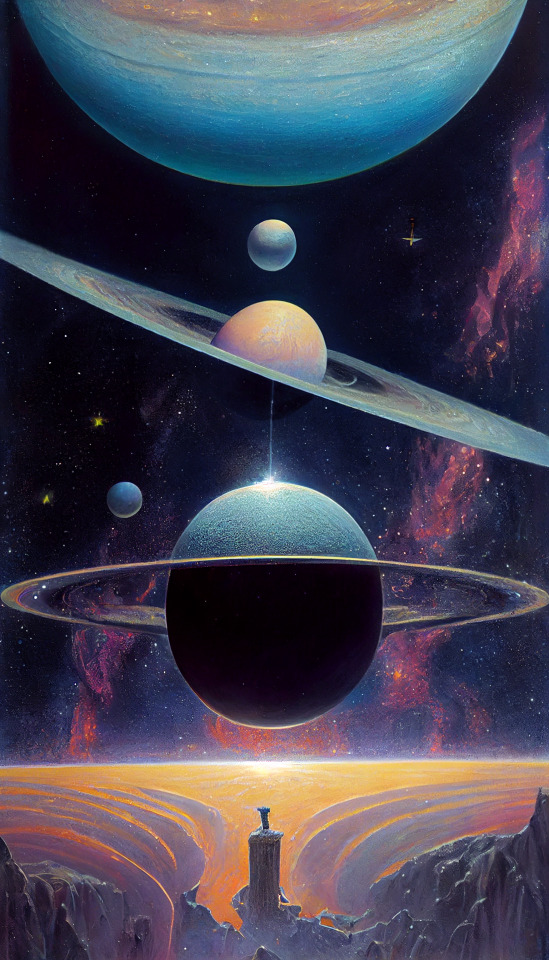
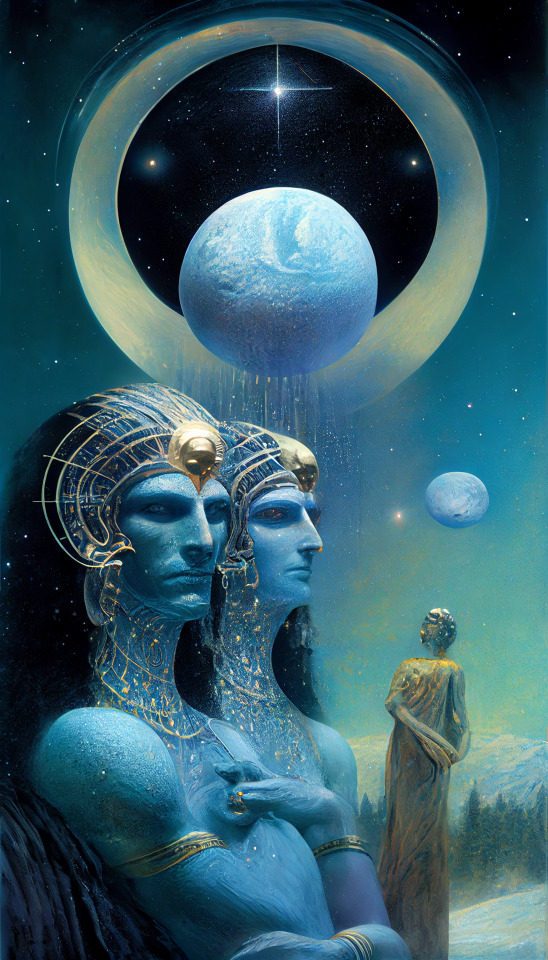

Whate'er exists in heaven and earth, whate'er beyond the skies,
Before the eyes of Varuna, the king, unfolded lies.
Atharva Veda
Ouranos
Talon Abraxas
46 notes
·
View notes
Text
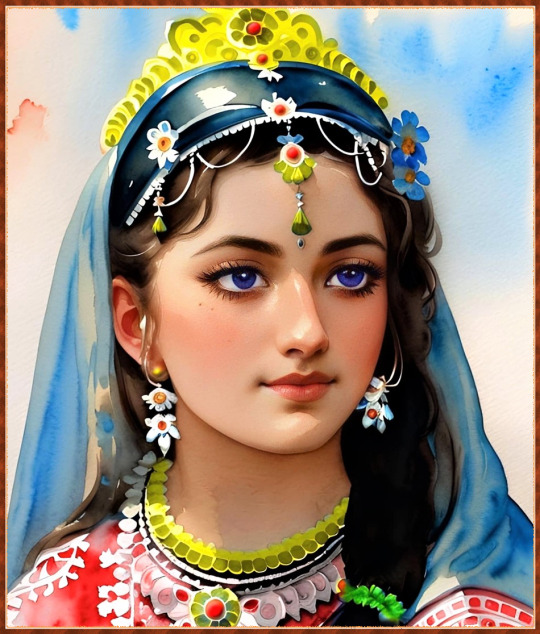
☀ SHRI RADHA ☀
“The maha-mantra is the topmost and most confidential of all mantras. It can only be understood when one engages in the pure devotional service of the Supreme Lord.”~Sri Chaitanya Upanishad-Atharva Veda
Hare Krishna Hare Krishna
Krishna Krishna Hare Hare
Hare Rama Hare Rama
Rama Rama Hare Hare
34 notes
·
View notes
Text

जय श्री सीताराम🏹🙏अथर्वदेव....📖
3 notes
·
View notes
Text
Charvaka - World History Encyclopedia
https://www.worldhistory.org/Charvaka/
View On WordPress
#600 BC#Ancient India#Astika#Atharva Veda#Atman#Brahman#Brahmanism#Brhaspati#Brhaspati Sutra#Brhaspatya#Buddhist#Charvaka#Dharma#Dharma Shastra#Hinduism#Jain#Karma#Lokayata#Moksha#Nastika#Pramanas#Rig Veda#Rita#Sama Veda#Sanatan Dharma#Sanskrit#Shruti#Upanishads#Vedas#Yajur Veda
0 notes
Text




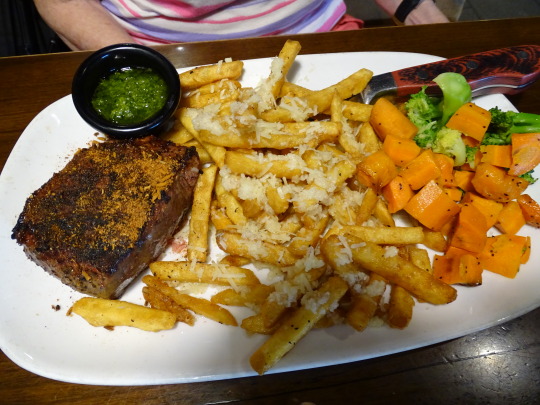
















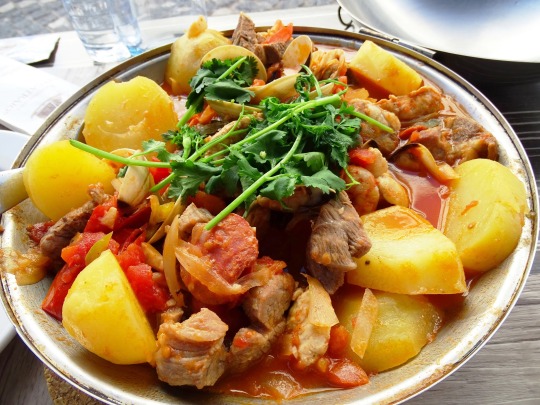




National Herb Day
It is National Herb Day on May 4! It is usually celebrated annually on the first Saturday of May. The HerbDay Coalition, an organization of five non-profit groups, started National Herb Day to raise awareness about the useful properties and importance of herbs in daily life. They also work towards encouraging people to learn more about the herbs and provide a better understanding of the extensive uses of herbs in daily life. Herbs are extensively used in food, medicines, and cosmetics. They also served as the first medicines ever used by humans to cure various ailments.
History of National Herb Day
Botanically, herbs are classified as the green parts of a plant used in food or medicine. Herbs are as old as human civilizations and have been used for cooking and medicine since time immemorial. There is well-preserved archaeological evidence pointing to the use of herbs 60,000 years ago. Neanderthals, ancestors of modern Homo sapiens, started using herbs for healing. In a way, we can say that herbs predate even that of recorded history and form the origin of much of modern medicine. Archeologists have discovered traces of pollen and other plant materials near burials, indicating the use of herbs.
There is hardly any civilization that didn’t take advantage of the use of herbs. The Sumerians, Egyptians, Indians, and Chinese all used herbs independently of one another. They created clay tablets that date back 5,000 years and listed hundreds of medicinal plants on them. In Egypt, texts like Papyrus Ebers describe ailments, treatments, and around 850 medicinal plants. The Indian medicinal school of Ayurveda, which uses natural remedies and herbal medicine to cure health conditions, is still prevalent in this modern age. Ayurvedic medicine has used many herbs dating back to 4000 B.C.
The study and use of herbs thrived in the Middle Ages when most cultures attributed spiritual qualities to herbs. A prominent example is the holy status of basil leaves in India. There is also a resurgence in the use of herbs in the last 40 years due to the impact of chemical drugs and the investment in pharmaceutical research and development. To address the growing popularity of herbs and to spread their importance, the HerbDay Coalition started National Herb Day.
National Herb Day timeline
6,000 Years Ago
The Rise of Ayurveda
The “Rig Veda” and the “Atharva Veda,” the Vedic scriptures of Hinduism, mention the prevalence of medicinal plants and Ayurveda.
5,000 Years Ago
Sumerian Texts on Herbs
Sumerians write about hundreds of medicinal herbs on clay tablets.
1526 A.D.
The First English Herbal
Peter Treveris prints “Grete Herball,” the first English herbal.
1600 — 1700
The Era of Bubonic Plague
The popularity of herbal medicines declines because of their ineffectiveness against the Bubonic Plague.
National Herb Day FAQs
How many herbs are there in the United States?
There are approximately 75 to 100 herbs listed in the National Library of Medicine
What is the most popular herb in the world?
Cumin is generally considered the most popular herb in the world.
Is an herb a vegetable?
Herbs are a subset of vegetables, which are generally composed of flavorful leaves of plants such as cilantro and basil.
National Herb Day Activities
Buy herbal products: Herbal products are rich in medicinal properties and nutrient values. Purchase herbal products for your daily use.
Invite friends for an herbal-themed party: Invite friends for an herbal-themed party. Create food and decorations in the shape of various herbs available in your locality.
Create an herbal garden: Create an herbal garden in your backyard. Try herbs that are already available in your locality before expanding your horizons over time.
5 Facts About Herbs That You Should Know
Stronger flavor for dried herbs: Both dried and fresh herbs can be used, but dried herbs have a stronger flavor.
Herbalists and botanists: In the middle ages, botanists were known as herbalists.
Herbal: The book of plants: A book containing the names, legends, stories, and descriptions of plants is called a ‘herbal.’
Herbal medicine users: 80% of people worldwide use herbal medicines.
Herbal medicines in Germany: Around 600 to 700 plant-based medicines are available in Germany.
Why We Love National Herb Day
Low side effects: Herbal medicines have fewer side effects compared to modern medications. It may be slow compared to modern medicine, but certain herbal medicines are effective against many lifestyle diseases.
Good for health: Herbs are good for your health. They are rich in nutrients and have medicinal value.
A second option: Herbal medicines are a second option for various lifestyle diseases. Major diseases like diabetes can be controlled with herbal remedies.
Source
#National Herb Day#4 May 2024#NationalHerbDay#first Saturday in May#salmon with potato salad#bratwurst#cabbage#Steakpfanne#Sweden#Germany#food#restaurant#original photography#Truffle Fries with parmesan reggiano#Garlic Fries#USA#roasted potatoes#mushroom#Madeleine#loaded baked potato#travel#vacation#Filet Port#scallops#Cataplana de marisco
2 notes
·
View notes
Text
God can increase the life span human being and cure Incurabls diseases. Rig veda Proves that supreme God kabir- is the creator of all the universe atharva ved kaand 4 anvvaak 1 mantra 7 please must watch sadhna TV channel everyday 7:30 pm

3 notes
·
View notes
Text
Goddess Pratyangira, also known as Atharvana Bhadra Kali, holds a unique place in the realms of Tantra and Vedic traditions. Associated with the Atharva Veda, she safeguards its secret mantras, tantras, and yantras, preventing them from falling into malevolent hands. This formidable deity is renowned for her role in countering black magic and protecting seekers from tantric attacks.
#tantra #yoga #meditation #love #kundalini #spirituality #spiritual #tantrayoga #shakti #o #amor #shiva #divinefeminine #mantra #healing #tantric #tantramassage #spiritualawakening #chakras #mindfulness #reiki #selflove #osho #tantricsex #buddha #yoni #consciousness #massage #massagem #yogi
3 notes
·
View notes
